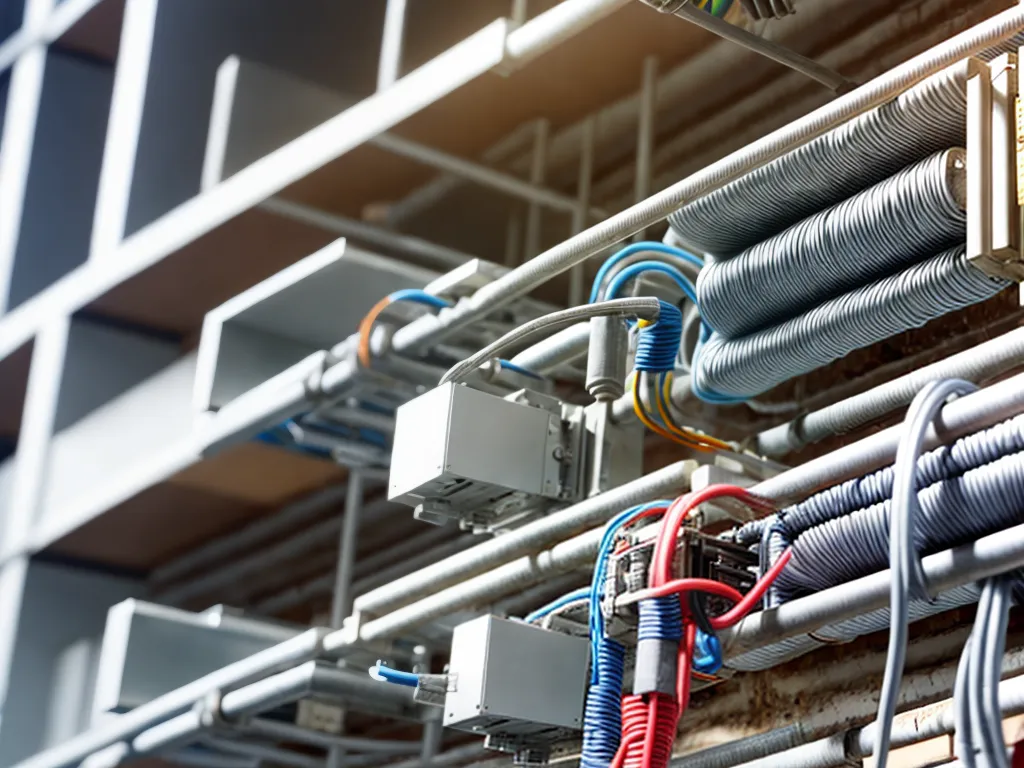
Commercial buildings have extensive electrical systems that must adhere to building codes and standards to ensure safety. However, inadequate wiring practices can lead to code violations and hazards. By understanding common deficiencies and implementing best practices, contractors can improve compliance.
Why Code Compliance Matters
Compliance with the National Electrical Code (NEC) and local codes is critical because:
-
It reduces fire risks from faulty wiring. Electrical fires cause over $1 billion in damages annually.
-
It prevents electrical hazards like shocks and electrocution. Non-compliant wiring can energize enclosures and fixtures.
-
It provides oversight for consistent, minimum safety standards. Authorities can catch issues through permitting and inspections.
-
It limits liability. Lawsuits, fines, and license discipline can result from non-compliant work.
Real-World Effects of Non-Compliance
I once visited a commercial building where loose connections in the main panel caused overheating. This fire hazard was overlooked during construction and could have endangered occupants. Proper torquing and inspection would have prevented it.
Common Electrical Deficiencies in Commercial Buildings
Based on my inspections, some frequent deficiencies include:
Inadequate Conductor Sizing
- Conductors must be sized to handle expected loads. Undersized wires can overheat.
- The NEC includes required sizing for various applications. Not following code mandates risks failure.
Unsecured Cables and Conduit
- Cables and conduit must be firmly secured per NEC requirements. Loose wiring is unsafe.
- Support intervals are specified based on wire type and orientation. Ignore them and vibration can damage wiring.
Lack of Arc-Fault Circuit Interrupter (AFCI) Protection
- AFCI breakers help prevent fires from arc faults. They are required in many commercial circuits per NEC.
- Omitting AFCI where needed leaves wiring vulnerable to dangerous hot spots.
Best Practices for Improved Compliance
Here are key ways electrical contractors can improve code compliance:
Careful Design and Planning
- Thoroughly review building plans against the NEC before work begins. Identify any non-compliant aspects of the design that must be corrected.
- Coordinate with other trades to avoid potential conflicts where electrical wiring must interface with other systems.
Proper Materials Selection
- Verify conductor sizes and insulation types meet NEC rules. Oversizing is better than undersizing.
- Choose approved, listed wiring and devices tested for safety. Research unfamiliar products.
Rigorous Installation Techniques
- Follow the NEC's required wiring methods for each application. Avoid improvising.
- Use torque tools to tighten connections properly. Loose wiring causes issues.
- Adhere to required sizing of conduit, boxes, and raceways. This prevents cramming wires dangerously.
Thorough Testing and Inspection
- Perform detailed inspections at rough-in stage and again before closing up finished surfaces.
- Conduct insulation resistance, ground continuity, and other electrical tests to verify safety.
- Check your own work instead of assuming it's right.
Active Permitting and Code Consultation
- Secure the required permits and schedule inspections by the Authority Having Jurisdiction (AHJ). Don't skip steps.
- Ask code questions proactively if anything seems unclear or borderline non-compliant.
Continuing Education
- Stay updated on NEC changes through classes and trade organizations like the International Association of Electrical Inspectors.
- Learn from past mistakes. Share lessons with other electricians to improve practices.
Partnering with Code Officials for Safety
As an electrical contractor, I see code officials as partners in providing safe, compliant work. Here are tips for successful partnership:
- Maintain professionalism if contacted about possible violations. Be helpful, not defensive.
- If inspector interpretation seems unclear, politely request code references to understand their rationale.
- Discuss how to remedy issues cost-effectively. Negotiate timelines if repairs will be extensive.
- Ask the inspector's advice to boost your code knowledge and skills. Their input is invaluable.
- Send a thank you note after interactions to build rapport for future projects.
Conclusion
Attention to code compliance protects buildings, occupants, and electrical contractors alike. While common oversights occur, improving practices around design, materials, installation, testing, permitting, and continuous learning enables much safer outcomes. Partnering also strengthens the contractor-inspector relationship. With proactive effort and care, electrical contractors can significantly upgrade compliance and avoid preventable tragedies.